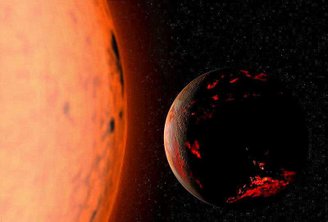our planet Earth has existed for approximately 4.5 billion years and has been populated by life forms for nearly its entire history.. Although the first representatives of the species homo sapiens Although they emerged approximately 200,000 years ago, humanity has only recently come of age and will likely not be around for long on the cosmic time scale.
It seems inevitable that our species will one day come to an end.
In order not to compromise the honesty of these words, it seems inevitable that all species living on Earth today will become extinct. The last 4 billion years have been a relentless and incredibly successful race for life. But the future of the next billion won’t be so bright.
Throughout your life, you have probably encountered countless stories about our impending doom, usually caused by a terrifying apocalyptic event in our imagination. Incarnations of the end of the world appear in various forms: the Mayan calendar apocalypse, Nibiru, a new great flood, some Bible prophecies, a giant asteroid falling towards Earth.
Today, fortunately, we no longer live in a world where myths and mysticism dominate our thinking, although it may seem that way at certain times. Today we know that we can understand what will happen in the future using the predictive tools of science.. Based on this, there are several different ways life on Earth could have ended. We will present 3 of them here.
end of oceans
The fact that our planet has the size and mass it has, that it has an atmosphere containing chemical elements in such specific proportions, and that it is far from a star like the Sun has provided a perfect combination for the survival of life with abundant liquid water. surface.
It’s a happy cosmic coincidence: If any of these property parameters were different, the variety and diversity of life, perhaps even all of life, would not exist today..

But thanks to the evolution of our Sun, our lakes and oceans won’t last forever. As helium accumulates in the core of the Sun, where nuclear fusion occurs and transforms hydrogen Our star is expanding and causing dramatic changes to the nearest planets.
After approximately 1-2 billion years, the amount of energy emitted by the Sun will increase until a certain critical point, that is, the amount that will boil all liquid water on the Earth’s surface. When this happens, the atmosphere will fill with water vapor and the greenhouse effect will kick in, catastrophically increasing the temperature of the planet, making it completely uninhabitable for life on the surface.
Transformation into a barren planet
Between 5 and 7 billion years in the future, the hydrogen in the Sun’s core will be completely exhausted. Meanwhile, the core will contract and heat up, causing the star’s outer layers to swell and expand.
As the sun’s surface expands, it will cool but also become much brighter. This is the point at which the Sun transforms from a main sequence star into a helium-burning red giant in its core..

The amount of energy produced in this process will be so extreme that nothing on Earth will be able to withstand this solar onslaught: Every atom in our atmosphere will be ejected, and any surviving creatures on the surface will be reduced to charred ash.
swallowed by the sun
If any extreme life forms survived this dramatic evolution of our star, they certainly won’t survive. grand final: In modern astrophysical predictions, The Sun will likely expand to a hundred times its current diameter and become thousands of times brighter than it is today..

In this process, the inner worlds Mercury and Venus will be completely engulfed, and depending on what the upper limit of the Sun’s growth forecast is, Earth and Mars may also enter this stellar meal.
In short, life on planet Earth will end. We know the distant future of our planet, but the short-term future is the future we must create. What choices do we make for this?
Source: Tec Mundo
I’m Blaine Morgan, an experienced journalist and writer with over 8 years of experience in the tech industry. My expertise lies in writing about technology news and trends, covering everything from cutting-edge gadgets to emerging software developments. I’ve written for several leading publications including Gadget Onus where I am an author.












